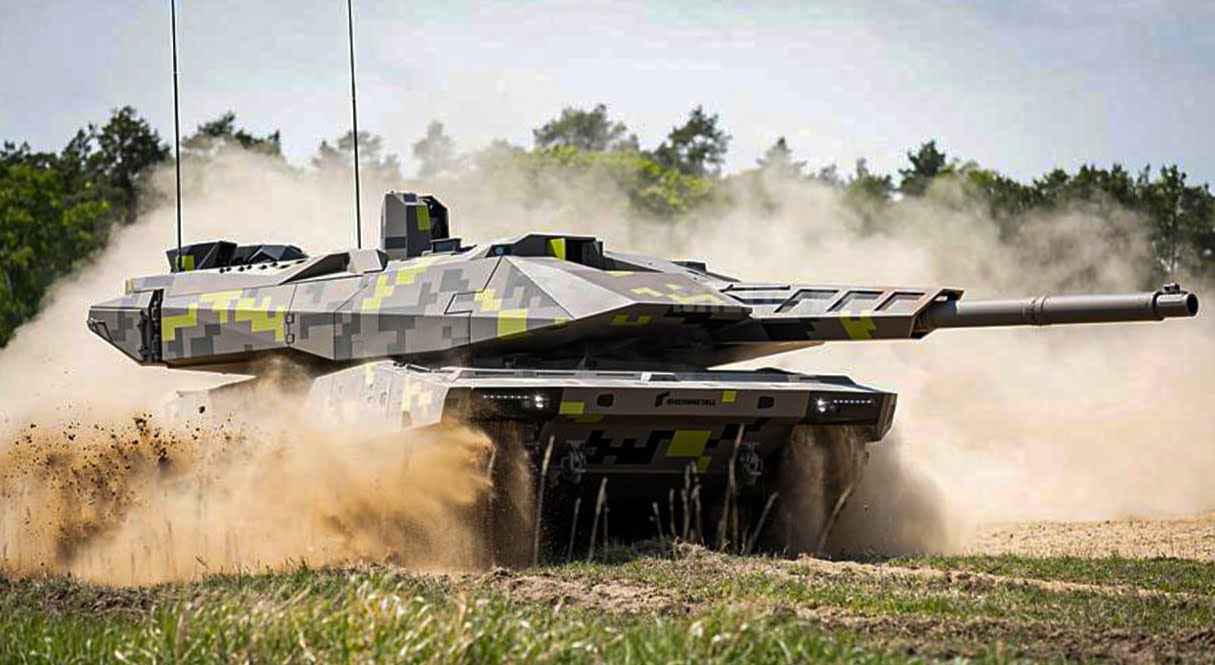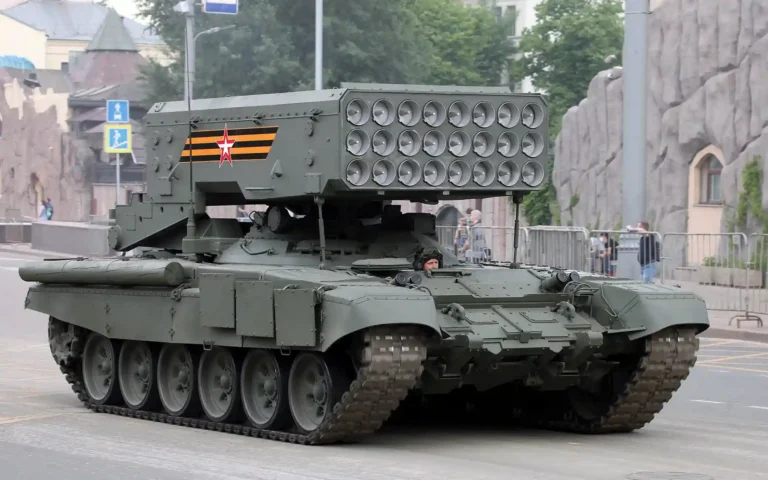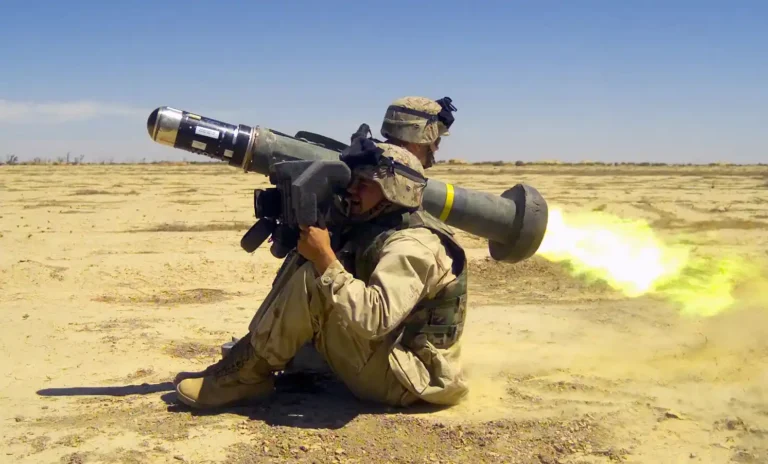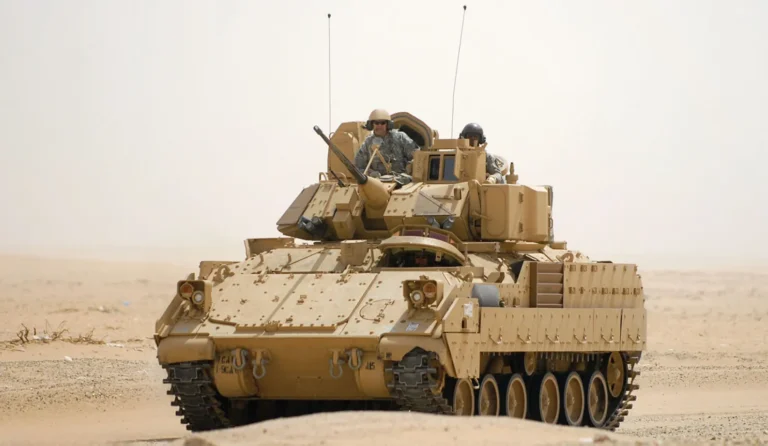Follow Us:
Share
Table of Contents:
Defense Feeds – At the international reference for land and airland Defence and Security exhibition or Eurosatory 2022, Rheinmetall presented KF51 Panther, a main battle tank which is destined to be a game changer for battlefields in the future.
This MBT is the newest member of Rheinmetall’s tracked vehicle family. So why is the KF51 Panther set to be a game changer on future battlefields?

The KF51 Panther is a main battle tank designed by Rheinmetall in Germany. The first of its kind, this tank pioneers a completely new MBT concept.
This is mainly because the Panther was built from the ground up using some of the most advanced technologies which set new standards in all areas: lethality, protection, networking, reconnaissance, and mobility.
It is unveiled by Rheinmetall at the Eurosatory 2022 event held in Paris in June 13 at Stand F241-240. So now, let’s take a look at how lethal and ground-breaking this MBT is.
Armed with the Rheinmetall Future Gun System (FGS) and optimized sensor-to-shooter links, you have unrivalled lethality overmatch of this KF51 Panther. This is mainly due to the FGS, which consists of a 130mm smoothbore gun and a fully automatic ammunition handling system, provides superior firepower against all current and foreseeable mechanized targets.
The autoloader can maintain 20 ready rounds, making the FGS more than fifty percent effective for engagement at much longer ranges than the current 120mm systems. To make the tank even more deadly, FGS can fire kinetic energy (KE) rounds, programmable airburst ammunition, and corresponding practice rounds.
Also, with further armament options available, the Panther can provide concentrated firepower for long-range strikes and against multiple targets. These include a 12.7mm coaxial machine gun and HERO 120 loitering munition.
The 12.7mm coaxial machine gun is intended to supplement the main weapon with a variety of integration options for remotely controlled weapon stations (RCWS), that offer proximity and drone defense flexibility.
In addition, the KF51 Panther on display at Eurosatory 2022 is equipped with Rheinmetall’s new “Natter” or adder RCWS in 7.62 variant. On the other hand, the Rheinmetall’s partner UVision’s HERO 120 loitering munition can be integrated with the launcher for improved ability of the KF51 to strike targets beyond its direct line of sight.
The KF51 Panther is the first MBT to use an outstanding integrated survivability concept that combines on- and off-platform sensors with active, reactive, and passive protection, as well as a dedicated top attack protection system (TAPS).
These compelling features offer active protection against a wide range of threats especially the KE ones and increase the level of protection without increasing the system’s weight. The TAPS deflects threats from above, while the ROSY smoke/obscurant systems conceal the KF51 from enemy observation.
Furthermore, with its digital NATO Generic Vehicle Architecture (NGVA), the tank can generate additional sensors for detecting launch signatures. This is enhanced by the tank ability to recognize and neutralize threats at an early stage, thanks to its pre-shot detection capability.
With such survivability and force protection, therefore, the KF51 is fully hardened against cyber threats and is designed to operate in a contested electromagnetic environment.
In terms of controllability and networking, the Panther has a novel operating concept. It is primarily intended for a three-person crew: the commander, gunner, and driver in the turret, with an additional operator station available for a weapons and subsystems specialist or command personnel such as the company commander or battalion commander.
The tank’s fully digitalized architecture, developed in accordance with NGVA standards, enables seamless integration of sensors and effectors both within the platform and into a networked “system of systems.” These allow sensor and weapon operation to be instantly transferred between crew members. Each operator station can take over tasks and roles from others while still remaining fully functional.
The fully digitalized NGVA architecture also connects all weapon systems to the commander’s and gunner’s optics, as well as the fire control computer.
This makes it possible for both a hunter-killer and a killer-killer function, as well as instant target engagement
Further to this, since the turret and weapons can be controlled from the chassis operator stations, it leads to the plan that the future variants of the KF51 Panther will feature unmanned turrets or completely remote-controlled vehicles turret and is even supported by Human-Machine Teaming.
For reconnaissance and situational awareness, the Panther is fitted with panoramic SEOSS optical sensor and EMES main combat aiming device that allow the commander and gunner to observe and engage targets independently, day and night, with both have already been provided with a stabilized daylight and IR optic with integrated laser rangefinder.
Furthermore, the crew has access to a 360°, round-the-clock view of the vehicle’s surroundings via a display in the fighting compartment. In congested areas and close to the vehicle, integrated unmanned aerial reconnaissance systems improve the crew’s situational awareness.
With these, the crew can conduct reconnaissance while wearing armor and networkedly share the results with other vehicles and weapon systems.
The KF51 Panther builds on the Leopard 2’s mobility concept. It has a maximum operating range of around 500 kilometers and an operational weight of only 59 tons, giving it far greater mobility than current systems.
This puts the tank in a battle-winning weight category, and it also fits the tunnel profile AMovP-4L without preparation, which no other current MBT upgrade can do. As a result, the Panther excels at both tactical and strategic mobility.
Overall, Rheinmetall’s goal in developing the KF51 was not only to modernize existing main battle tank concepts. It completely redesigned the platform from the ground up.
The KF51 Panther is easily upgradable and can be outfitted with the most recent capabilities and functions. Its advanced, modular, open NGVA system architecture allows for iterative development that can then be updated in sync with innovation cycles.
The KF51 is the first vehicle to represent a new generation of combat vehicles. Future innovations will soon enable environmentally friendly peacetime operations as well as further automation and combat effectiveness optimization.
Furthermore, users, maintenance specialists, logisticians, and procurement experts from all current and future user nations can also play an active role in shaping the vehicle’s future thanks to Rheinmetall’s innovative development approach.
So, do you think the Rheinmetall’s KF51 Panther will be the most advanced ultimate main battle tank and a game changer on future battlefields?
Share
Defense Feeds
Defense Feeds is publication focusing on informing, engaging, and empowering the world by providing accurate information from defense technology.
Powered by Defense Feeds © 2025 – All rights reserved.




